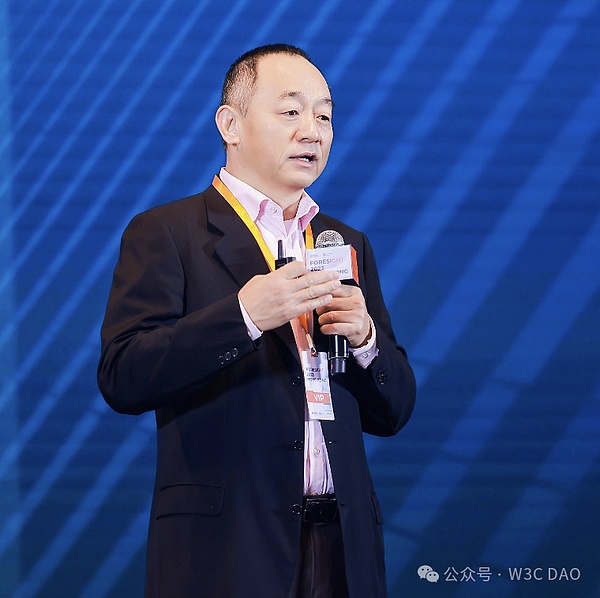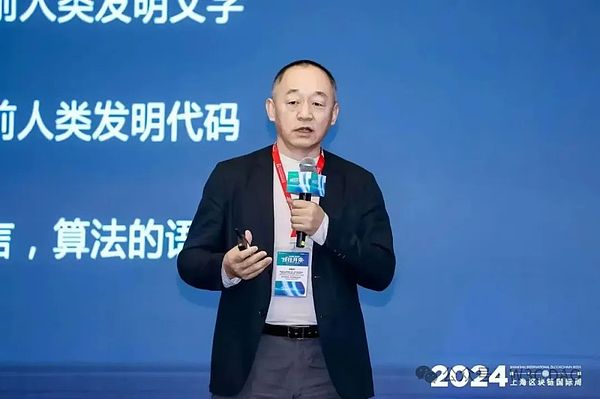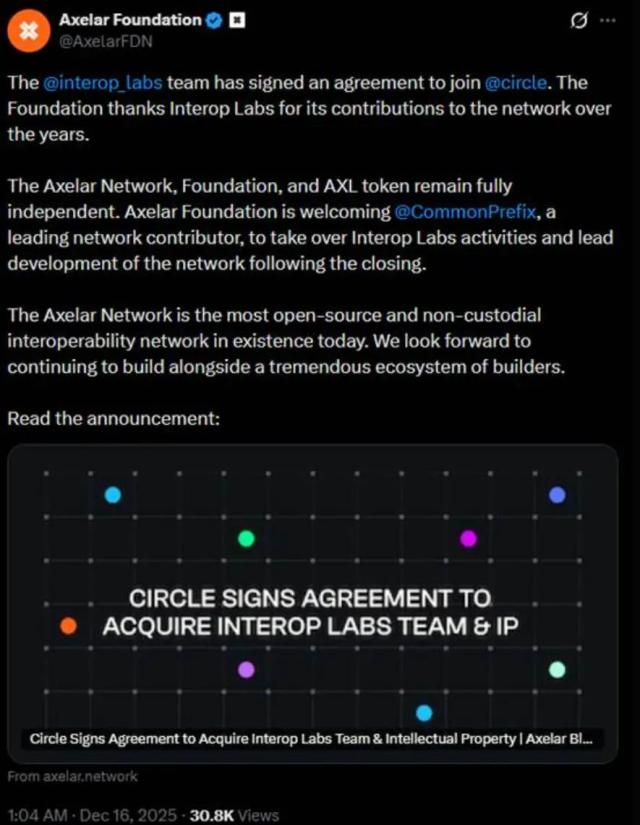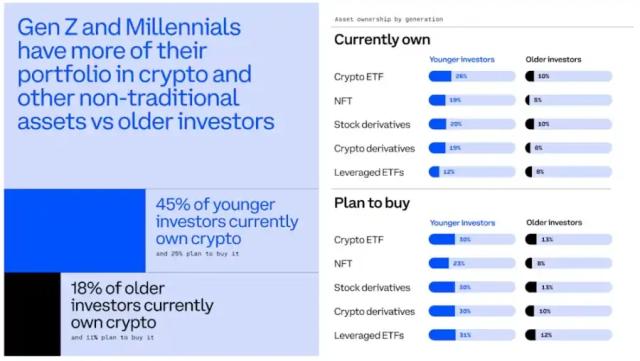Speaker: Dr. Xiao Feng, Chairman and CEO of HashKey Group
On February 20, Dr. Xiao Feng, Chairman and CEO of HashKey Group, delivered a keynote speech titled "Block Chain: From the Origin" at the Web3 Voyage event hosted by HashKey Chain. The following is the full text of the speech, compiled from on-site shorthand, with some deletions that do not affect the original meaning.
Hello everyone, welcome to our on-site meeting today.
On August 28, 2023, we held the launch ceremony for our Hong Kong Exchange HashKey Exchange at the same location - the Hong Kong Maritime Museum. Hong Kong is a harbor city, so we deliberately chose this symbolic place to hold the opening ceremony.
Today is the second time the group has held an event here. HashKey Exchange is one wing of HashKey, and HashKey Chain is the other wing of HashKey Group. In today's speech, I will elaborate in detail why HashKey Chain is so important to us.
Blockchain: New Financial Infrastructure
Starting from the origin of Blockchain, from the first principles, from the basics, we need to examine the much-discussed crypto assets, or so-called virtual assets.
All of this is built on blockchain technology. Therefore, we need to return to the original intention and explore what blockchain is.
Three Elements of Human Social Evolution
Before formally starting the speech, I would like to quote the research results of a Nobel laureate in economics. He has long studied the Industrial Revolution and concluded that "the Industrial Revolution had to wait for a financial revolution."
His research results cover the first three industrial revolutions, and now we have entered the fourth industrial revolution - the era of intelligence and digitalization.
He believes that all industrial revolutions depend on the support of new financial service models to support the development, growth and expansion of new industrial revolutions. Conversely, without the support of a financial revolution, the industrial revolution of human society may not be successful.

Many people are reluctant to admit that Blockchain is the infrastructure supporting the Fourth Industrial Revolution, so we often mention "consortium chains" or "non-currency blockchains". But the practice of the past decade has proved that most of these attempts do not work. We must bravely admit that the core entry point of Blockchain as a tool for adjusting production relations is finance. If there is no financial demand, we do not need Blockchain at all. This means that when human beings enter the Fourth Industrial Revolution and innovate digital and intelligent production relations, a new financial revolution is indispensable. Otherwise, all of this may not happen or cannot succeed.
Four "Industrial Revolutions"
This economist further pointed out that each industrial revolution is a superposition of energy revolution, industrial revolution and financial revolution, among which the financial revolution is often the prerequisite.
This makes me think of the research in physics: social development and technological progress cannot be separated from the conversion of energy, energy and information. This conversion is in line with the energy revolution, industrial revolution, and financial revolution in some scenarios. Along this framework, let's review the past three industrial revolutions:
The first one was marked by the steam engine, occurring in Britain;
The second one was represented by electricity and wireless communication, occurring in the United States;
The third one, marked by computers, code and the Internet, also originated in the United States.

Another scientist once mentioned that humanity has experienced three cognitive revolutions:
The first was the invention of language, enabling communication between people;
The second was the invention of writing, recording and passing on experiences;
The third was the invention of code last century. Code, as a new language, has expanded the scope of communication, communication and coordination in human society by orders of magnitude.
Without code, there would be no AI, Blockchain or the Internet. Code created the language between humans and machines, and between machines, greatly expanding the space for information and economic activities. This also explains why the market value of listed companies can now reach $3 trillion, while the highest in the industrial economy was only $600 billion - such as Exxon Mobil and General Electric. Nowadays, companies with market values of trillions of dollars are ubiquitous, and some even predict that Nvidia may reach $5 trillion or $10 trillion.
The Fourth "Industrial Revolution"
The Fourth Industrial Revolution emerged in the early 21st century, represented by Blockchain, AI and cloud computing. If it was in January, I would not dare to say it is related to China, but now I can say that China and the United States are jointly driving this wave. From the Internet to AI, the top 10 platforms and large model R&D are almost concentrated in China and the United States, with little trace of Europe and Japan, and China has boarded this fast train.
However, the Fourth Industrial Revolution must be supported by a financial revolution. Britain relied on the credit and bond markets, the United States relied on investment banks and capital markets, and the third relied on venture capital (VC) to spawn Silicon Valley and Chinese Internet platforms. Does the Fourth Industrial Revolution not need a new financial model?
The greatest value of AI lies in embodied intelligence and spatial intelligence, which requires a large number of robots. What currency will be used for payments between robots, and between humans and robots? Only programmable currencies based on smart contracts can be competent. This means that the Fourth Industrial Revolution must call for a new financial revolution, otherwise its potential will be greatly discounted.
The Fourth "Financial Revolution"
The Fourth Industrial Revolution is inseparable from Blockchain, smart contracts, digital wallets and programmable currencies. Blockchain is a globally public and transparent public ledger, and the human computational method has only changed three times in a millennium: single-entry bookkeeping in the Sumerian era, double-entry bookkeeping in Italy in 1300, and the distributed ledger brought by Bitcoin in 2009. Distributed ledgers were born out of the cross-time, cross-space, and cross-organizational characteristics of digital living, and are the financial foundation of the Fourth Industrial Revolution.
Compared to traditional finance, the new finance has three major changes:
One is that the computational method has changed from double-entry bookkeeping to distributed ledger;
Two is that the account has changed from a bank account to a digital wallet;
Three is that the accounting unit has changed from legal tender to digital currency. This has given rise to crypto assets - a new category of assets based on distributed encryption algorithms and ledgers.
The First Principles of Blockchain
What is the first principle of finance? It is the mismatch of value across time and space, which has remained unchanged for a millennium. But the service model is changing: from no banks to having banks, from no central banks to having central banks. Some say the essence of finance does not change, but banks and exchanges are just tools. Digital activities transcend time and space, and payments have become peer-to-peer, distributed, and self-organizing networks, with remittances from Hong Kong to the US arriving in minutes, without the need for five institutions to reconcile. Which way is more in line with human nature? Seconds-level arrival, near-zero fees, aren't these better choices?
The Essence of Finance
The yields on DeFi (Decentralized Finance) on Blockchain are very high, 10%-20%, even 30%-40%. The traditional financial world often says that returns above 7% may be a scam, accusing DeFi of being a Ponzi scheme.

After years of contemplation, my conclusion is: well-regulated DeFi projects offer risk-free returns, with leverage lower than banks (banks have a capital adequacy ratio of only 12%), yet achieve high returns through over-collateralization. The core lies in the efficiency of capital turnover - banks can only turn over 12 times a year at the limit, while DeFi can reach tens of thousands of times, and flash loans can be completed in seconds. This efficiency boost is the charm of the new finance.
From Digital Native to Digital Twin
Let's discuss a few hot topics, starting with RWA (Real World Assets). Ten years ago, stablecoins (such as USDT in 2015) opened the door to monetary tokenization, and by 2024 the trading volume will reach $16 trillion, a scale of only $300 billion, far exceeding the $300 trillion trading volume of traditional finance. From 2024 onwards, the tokenization of financial assets will rise, with US asset management companies minting fund shares on public chains, with a scale exceeding that of stablecoins. The third wave is the tokenization of physical assets, which needs to solve the oracle problem and realize the digital twin from offline to on-chain.
The Five Types of Tokens
There are many types of tokens, and different types of tokens have different functions, which can be divided into five categories: payment tokens (such as stablecoins), reserve tokens (such as Bitcoin), utility tokens (such as Ethereum's ETH), security tokens (such as ETF shares), and meme tokens (such as the tokens issued by Trump).
Finally, I want to say that we need to embrace the new era of "off-chain to on-chain". In 2025, this trend will come to the fore, driven by US legislation and presidential promotion. After the US grants legitimacy and compliance to the crypto industry, other countries will follow suit, with Hong Kong having already enacted legislation. Subsequently, global financial institutions will massively enter the crypto field, building new payment and settlement systems based on blockchain, or issuing new financial assets based on the token economy. The "on-chain" will truly enter a period of explosive growth.
That's all I have to share, thank you all.








